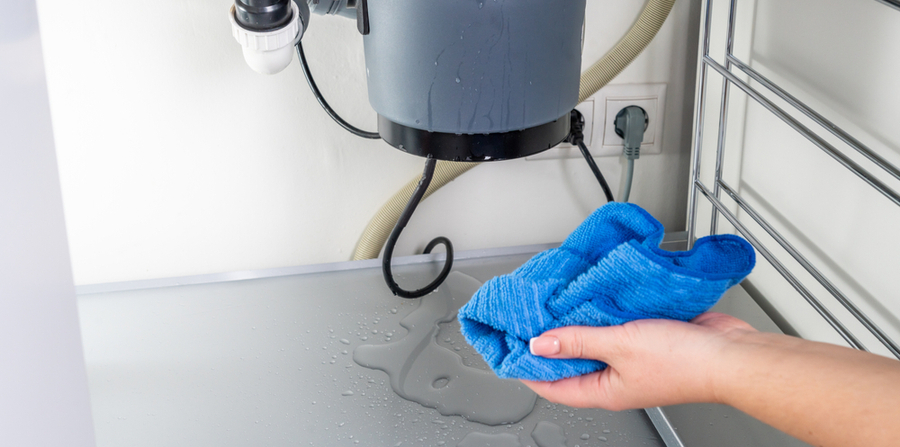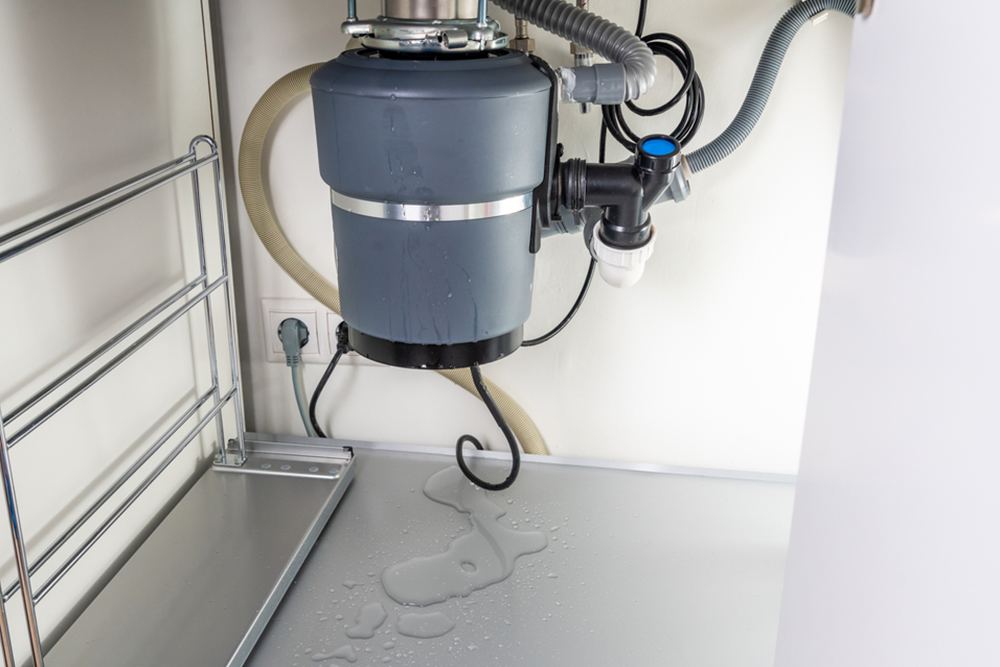Speedy Fixes for a Dripping Garbage Disposal
Speedy Fixes for a Dripping Garbage Disposal
Blog Article
The content down below pertaining to Tips on Fixing a Leaking Garbage Disposal is indeed enjoyable. Give it a go and make your own ideas.

Garbage disposals are important kitchen area appliances that help in disposing of food waste efficiently. Nonetheless, a leaking waste disposal unit can be an irritating and untidy trouble to manage. The good news is, lots of leaks can be fixed conveniently with a few easy steps. In this write-up, we will discuss just how to repair a leaking waste disposal unit efficiently.
Intro
Waste disposal unit are set up under cooking area sinks and are created to shred food waste into smaller items, allowing it to go through the pipes system conveniently. While these devices are generally trusted, leaks can happen gradually due to wear and tear, loose connections, or damage to the unit.
Usual Causes of Leaks in Rubbish Disposals
Worn Seals and Gaskets
Seals and gaskets play a crucial role in preventing water from dripping out of the waste disposal unit. With time, these parts can degrade, causing leaks around the disposal unit.
Loose Links
The links between the waste disposal unit and the plumbing system can come to be loose over time, creating water to leak out throughout procedure.
Cracks or Openings in the Disposal Unit
Physical damage to the waste disposal unit, such as fractures or openings in the housing, can additionally result in leakages.
Identifying the Resource of the Leakage
Before attempting to take care of a dripping garbage disposal, it is essential to determine the resource of the leak. This can commonly be done with aesthetic evaluation or by conducting straightforward tests.
Visual Assessment
Inspect the garbage disposal device carefully for any type of indicators of water leak. Pay close attention to locations around seals, gaskets, and link points.
Evaluating for Leaks
One means to test for leakages is by running water via the disposal unit and looking for any noticeable signs of leak.
Devices and Materials Needed for Repairing a Leaking Waste Disposal Unit
Before starting the repair procedure, collect the needed tools and products, including a screwdriver, flexible wrench, plumber's putty, substitute seals or gaskets, and epoxy or patching material for fixing cracks or openings.
Step-by-Step Guide to Repairing a Leaking Garbage Disposal
Turn Off the Power
Before trying any fixings, guarantee that the power to the waste disposal unit unit is shut off to stop the risk of electric shock.
Find the Leakage
Recognize the exact place of the leakage and establish the cause.
Tighten Connections
Utilize a wrench to tighten any loose connections in between the disposal system and the plumbing system.
Replace Seals or Gaskets
If the leak results from worn seals or gaskets, eliminate the old components and replace them with new ones.
Patching Cracks or Holes
For splits or openings in the disposal device, usage epoxy or a suitable patching material to secure the broken area.
Evaluating the Garbage Disposal After Repair
Once the repair is total, examine the garbage disposal by running water through it to make sure that the leakage has actually been resolved.
Preventive Maintenance Tips to Prevent Future Leaks
To stop future leaks, it is necessary to do normal maintenance on your garbage disposal. This includes keeping it tidy, avoiding putting non-food items or hard things down the disposal, and occasionally checking for leaks or other problems.
Verdict
To conclude, taking care of a leaking garbage disposal is a fairly simple procedure that can be completed with standard tools and products. By complying with the actions described in this write-up and practicing precautionary upkeep, you can maintain your waste disposal unit in good working problem and avoid expensive repair services in the future.
What to Do About a Leaking Garbage Disposal
A leaking garbage disposal often goes unnoticed until you confront a sopping cabinet, a foul-smelling puddle, or an audible drip-drip-drip from the unit. The fix can be frustrating, too, because the leak can stem from a number of components in the system. Fortunately, with a little sleuthing, you can zero in on the leak and—depending on the exact location—stop the icky oozing and repair the component that caused it. Worst case scenario, if it turns out that the garbage disposal must be replaced, installing a new one is a reasonable do-it-yourself task for those with basic plumbing skills. Read on to keep the cash you’d otherwise hand over to a pro.
Prepare to find the leak
Prior to testing the garbage disposal for leaks, unplug it at the wall outlet and turn off the power from the breaker box to prevent electrical shock. Then insert a watertight sink stopper into your sink drain and wipe the unit dry with a clean cloth. In any handy container, mix a few drops of food coloring into a few cups of water, and pour the dyed water onto the sink stopper to help you locate the leak.
Investigate the source
the top, where the disposal meets the sink drain the side, where the dishwasher hose or main drain pipe connects to the disposal or the bottom of the unit Inspect each of these locations while gliding a light-colored rag over the unit; the dyed water will readily show on the rag and reveal the location of the leak. If a leak isn’t immediately apparent, remove the sink stopper and pour a few more cups of dyed water down the sink drain, then check for leaks again. Leaks near the top of the unit are more likely to show themselves while the sink is plugged, while side and bottom leaks are more noticeable while the sink is unplugged.
The metal sink flange that sits directly inside the sink drain is typically sealed around the top with plumber’s putty (a clay-like sealant) and then secured from under the sink with bolts. If the plumber’s putty deteriorates, or the bolts loosen, the flange can no longer form a watertight seal between the sink drain and the disposal—which could cause a leak at the top of the unit.
To reseal the leaky flange, you must first detach the garbage disposal. Start by loosening the screws securing the main drain pipe to the disposal, then loosen the screws in the metal clamp securing the dishwasher hose to the disposal and detach the drain pipe and dishwasher hose from the disposal. Loosen the screws in the mounting ring that connects the disposal to the metal mounting assembly beneath the sink, then pull down the disposal and carefully set it on a clean, dry surface. Loosen the bolts in the mounting assembly with a wrench, then pull down the mounting assembly and set it near the disposal.

I ran across that content on Why Is My Garbage Disposal Leaking From the Bottom? when browsing the search engines. Remember to take the time to distribute this blog entry if you liked it. Bless you for your time. Visit again soon.
Prices & Booking Report this page